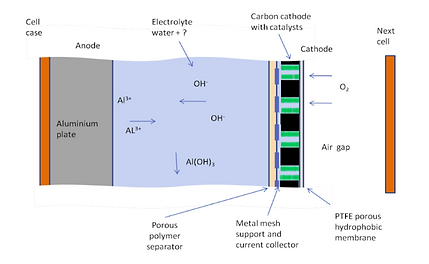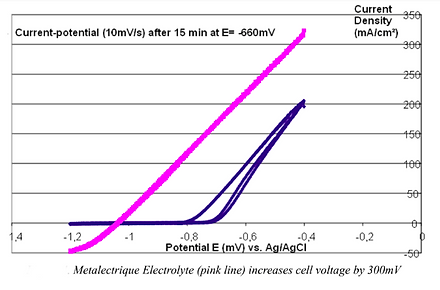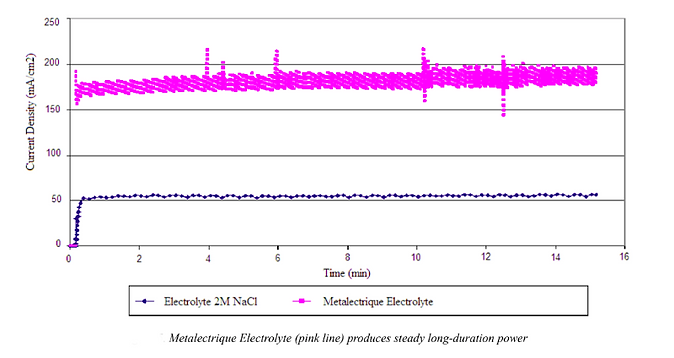Métaletrique's Aluminium-Air Technology
A Deeper Look
Aluminium-Air has long attracted attention due to the cheap, lightweight and high-energy nature of Aluminium as an anode. It is the most abundant metal on Earth and is easy to handle, store and is safe as a way of storing electrical energy.
Métalectrique has developed an advanced chemistry for Aluminium-Air so that they could be used to power electric transport safely and economically. Many of the problems associated with aluminium air technology have been overcome in Métalectrique systems and with a unique electrolyte, the technology has been advanced in terms of its capabilities compared with previous uses of the technology.
The Chemistry in the Cell
A cell in an Aluminium-Air system is built of three layers. The first layer is the aluminium plate, which is the anode of the cells; this plate reacts with the second layer, which is an electrolyte. The third layer is the cathode, allowing air to flow to the second layer. A diagram of a cell can be found below.
The discharge reactions within the cell are as follows:
Anode Al → Al+3 + 3e
Cathode O2 + 2 H2O + 4e → 4 OH ̄
Overall 4 Al + 3 O2 + 6 H2O → 4 Al(OH)3
The parasitic hydrogen – generating reaction is:
Al + 3 H2O → Al(OH)3 + 3/2 H2

Our Electrolyte
At Métalectrique, we have developed an advanced chemistry for aluminium air and many of the problems associated with aluminium air technology have been overcome in our systems. Furthermore, with a unique electrolyte, the technology has been greatly advanced in terms of its capabilities compared with previous uses of the technology.
The chemistry that we use was independently verified in France in 2007. Its advantages are:
-
Increases cell voltage by 300mV (Right)
-
Allows the use of ordinary aluminium
-
Limits H2, gel formation & heat generation
-
Allows steady, long-duration power
-
Enables ordinary Aluminium to reach current densities of 180mA/cm2 (Below)


Our Power
The diagram below shows that in terms of power and energy density, the aluminium air system is an order of magnitude better than any other existing power system. Our system can reach discharge power rates up to 5C for high power bursts or alternatively, we can optimise for high energy.

This Ragone plot was independently produced by UKTI/PERA/Warwick University
